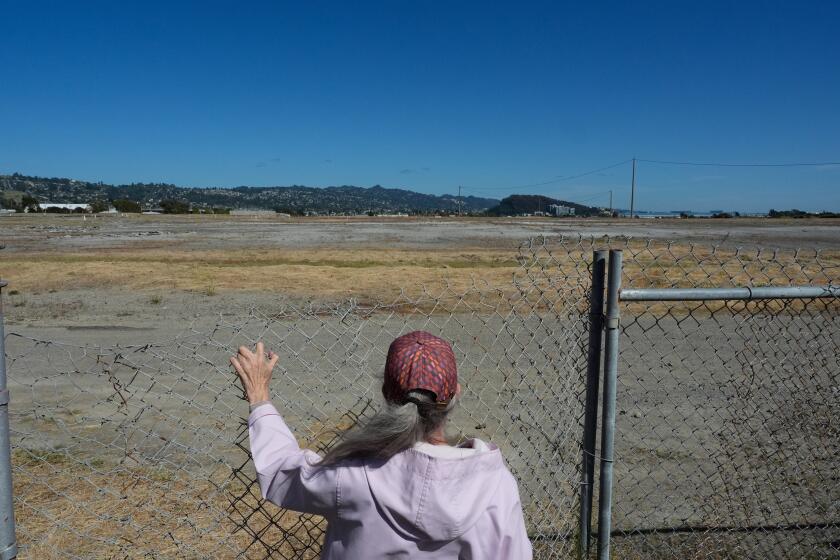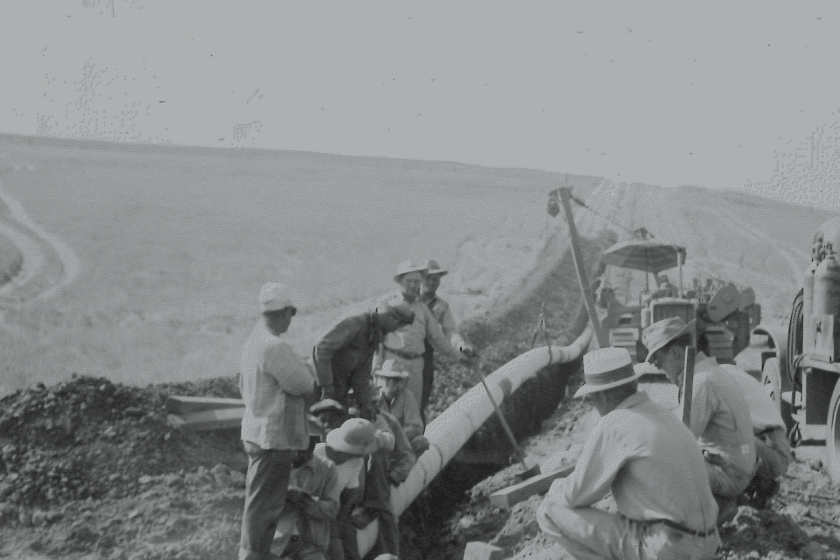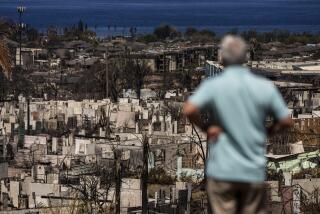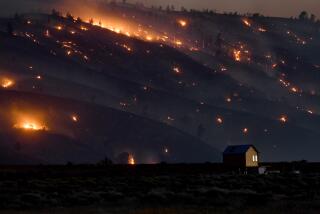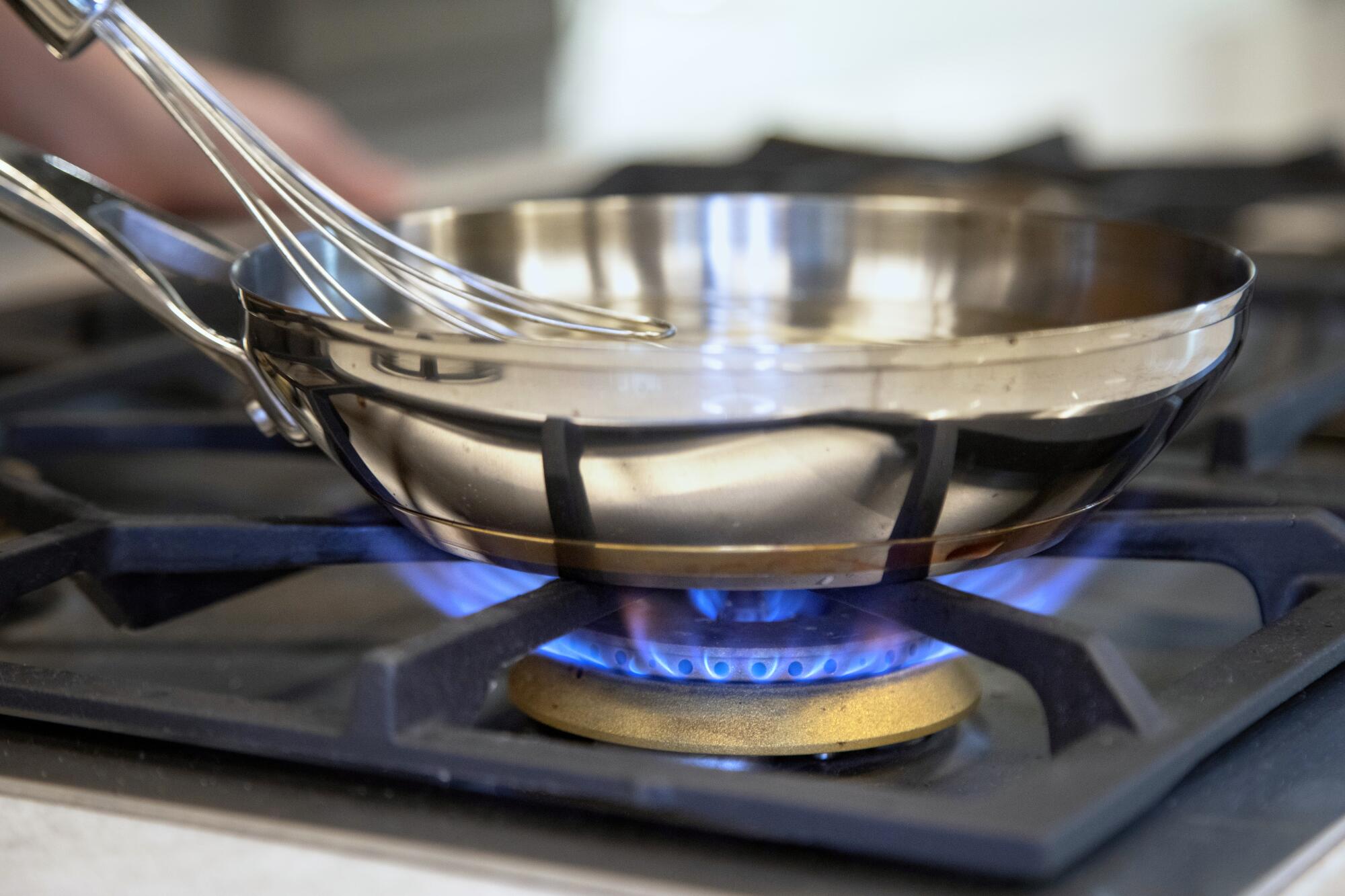
- Share via
Lung-irritating pollution created by cooking with gas stoves may be contributing to tens of thousands of premature deaths and cases of childhood asthma in the United States, according to a new study published in the journal Science Advances.
For decades, scientists have known the flames from a gas stovetop produce nitrogen dioxide, a pungent gas that can inflame a person’s lungs when inhaled. But for the first time, a team of researchers from Stanford University and Oakland-based research institute PSE Healthy Energy published a nationwide estimate of the long-term health consequences associated with cooking with natural gas and propane stoves.
Researchers ran tests in apartments and single- and multistory houses in Los Angeles, Bakersfield, the Bay Area and elsewhere, and concluded that exposure to nitrogen dioxide emissions alone may contribute to nearly 19,000 premature deaths in the United States each year. It has also resulted in as many as 200,000 current cases of pediatric asthma compared with cooking with electric stoves, which do not produce nitrogen dioxide.
Aggressive and impactful reporting on climate change, the environment, health and science.
Stanford researcher Yannai Kashtan noted higher levels of pollution were correlated with the amount of gas that was burned. But pollution also accumulated at higher levels inside smaller homes.
“If you live in a smaller house, you’re exposed to more pollution, and that can lead to income and racial disparities in exposure,” Kashtan said. “In general, folks living in neighborhoods with higher levels of outdoor pollution also tend to have higher indoor pollution. So this environmental injustice extends indoors as well.”
The American Gas Assn., a trade organization representing more than 200 local energy companies nationwide, dismissed the findings as “misleading and unsupported.”
“Despite the impressive names on this study, the data presented here clearly does not support any linkages between gas stoves and childhood asthma or adult mortality,” the association’s president and CEO, Karen Harbert said in a statement earlier this month.
A former chemical plant dumped thousands of tons of industrial waste around the San Francisco Bay Area. The deposits were made in places that are now open to the public — and could contain radioactive material.
The study is the latest examining the serious health effects associated with breathing fumes from gas stoves, which release planet-warming carbon emissions and a variety of air pollutants. In recent years, the popular household appliance has become a political hot-button issue as policymakers and regulators have weighed environmental impacts against consumer choice.
Many large cities in California, including Los Angeles, have moved toward phasing out gas stoves in newly constructed residences. Earlier this month, the California Assembly advanced a bill to the Senate that would require gas stoves to come with warning labels detailing the pollution and health effects that can arise from cooking with gas.
Gas stoves emit a variety of pollutants, including asphyxiating carbon monoxide, cancer-causing formaldehyde and benzene. The flame also creates nitrogen dioxide, a precursor to smog and a pollutant that can cause difficulty breathing.
Environmental groups say consumers should be notified about these pollutants and the potential harm they can cause.
“Gas stoves create pollution in our homes, increasing the risk of childhood asthma and other respiratory problems for our families,” said Jenn Engstrom, state director for California Public Interest Research Group. “However, this risk has largely been hidden from the public. Consumers deserve the truth when it comes to the danger of cooking with gas. Warning labels will give consumers what they need to make informed decisions when they purchase appliances for their homes.”
In an ironic turn, Tesla — the U.S.’ biggest manufacturer of electric cars — is facing accusations of harming air quality and endangering public health.
Kashtan and other researchers had previously discovered cooking with gas stoves presented cancer risk similar to inhaling secondhand cigarette smoke. They also found some gas stoves leaked contaminants even when the burners were off.
The effects are especially devastating to children, whose smaller and still-developing lungs need to take more breaths than adults, Kashtan said. Older adults, especially those with cardiovascular or respiratory illness, are also more vulnerable to pollution from gas stoves.
To alleviate indoor air pollution, experts recommend using ventilation hoods and opening windows while cooking.
Starting in 2008, California required new and redeveloped homes to have ventilation that could prevent pollution from building up indoors. But during their research, measuring emissions in more than 100 households across the country, Yannai said they found many kitchens didn’t have ventilation hoods at all.
Although the health effects of breathing these pollutants are clear, researchers still wonder to what degree these conditions could be reversible. As communities take steps to mitigate their exposure or transition away, he said, we could soon see the results.
“It’s never too late to stop breathing in pollution,” he said.
Bob Hope, along with Daffy Duck and Marlene Dietrich, helped popularize the catchphrase ‘Now you’re cooking with gas.’ Many decades later, we’re paying out the nose for the privilege.
More to Read
Sign up for Essential California
The most important California stories and recommendations in your inbox every morning.
You may occasionally receive promotional content from the Los Angeles Times.

